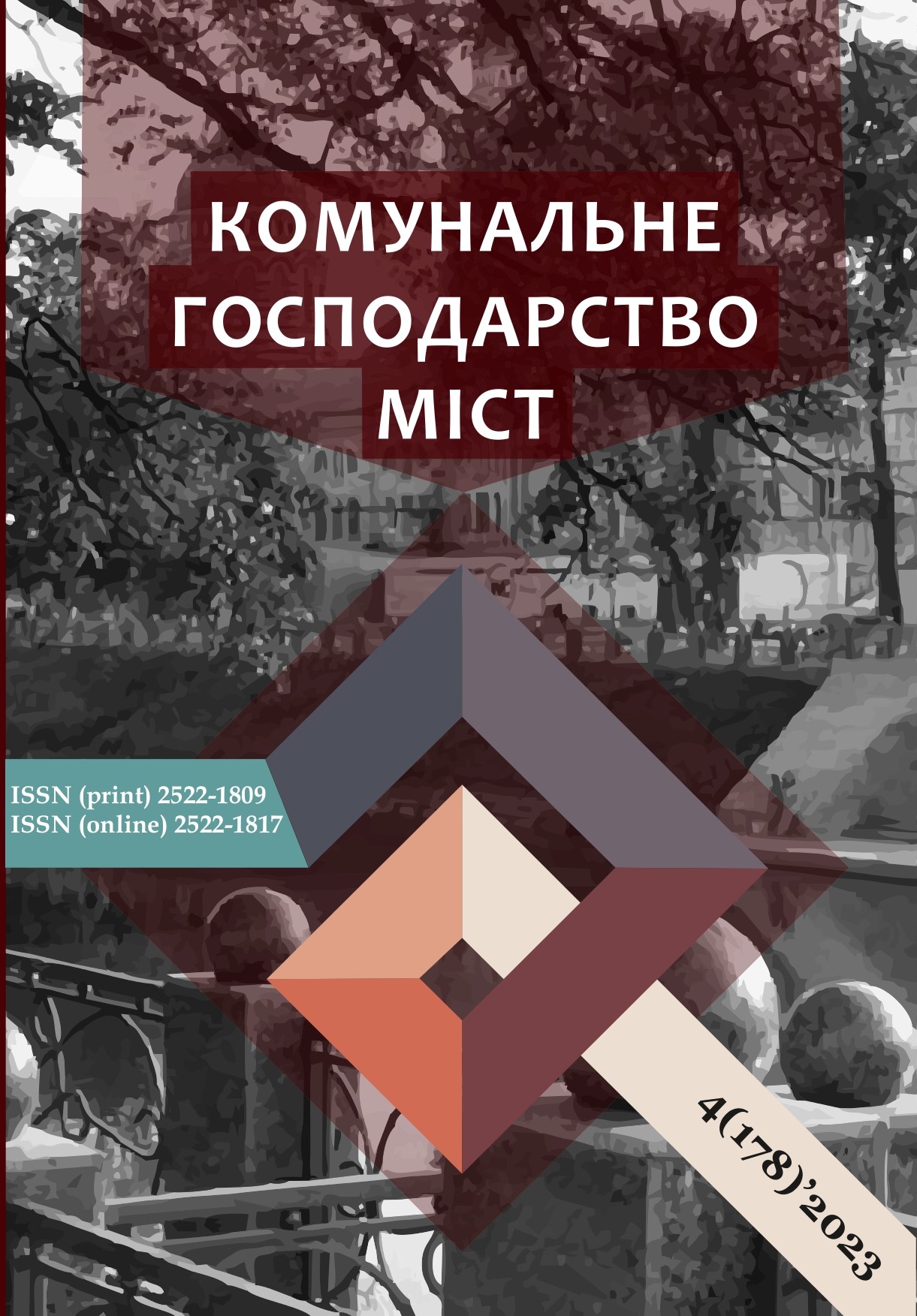FACTOR ANALYSIS AS A METHOD OF URBAN LAND USE RESEARCH
DOI:
https://doi.org/10.33042/2522-1809-2023-4-178-130-135Keywords:
spatial support, land use factors, methods of factor analysis, geospatial data, planning parametersAbstract
Cities are being rebuilt, expanded, and modernized, and proper land management becomes critical. Factor analysis can help identify areas in need of social investment, ensuring equal access to resources and opportunities for all citizens. Therefore, the relevance of factor analysis in the study of land use in modern conditions does not require discussion. Factor analysis is a statistical method that allows you to study the relationship between numerous variables and reveal the structural features of the data. The importance of the application of factor analysis in the processes of monitoring the use of land in cities lies in the heavy load on the land resources of cities, which requires informed decisions regarding their use. Factor analysis allows identify key factors affecting land use, understand the community's priorities and needs, evaluate the potential of different areas of the city for the placement of objects. Factor analysis also has its advantages and disadvantages. Disadvantages include: subjectivity (since some factors can be subjectively determined, there is a risk of data distortion or misinterpretation), dynamism (cities are dynamic systems. This means that they are constantly changing, and factors that were relevant today may lose their relevance tomorrow), complexity of interpretation (a large number of factors can complicate the process of interpreting the results). Positive aspects of factor analysis should be noted: continuous updating of data (aimed at collecting and obtaining the most recent data for accurate response and development of appropriate solutions), integrating different data sources (which is a combination of traditional and new data sources such as social networks, can help to get a more complete picture of the situation), the use of a multidisciplinary approach (which allows the involvement of experts from various fields and will provide a deeper understanding of the city's problems and needs). Thus, factor analysis in urban planning remains one of the most effective tools for understanding complex relationships in the city. To get the most complete picture of the situation, factor analysis is often combined with other research methods. One example is geographic information systems (GIS). They allow you to visualize the results of factor analysis on maps, which simplifies the decision-making process at the level of urban planning.
References
Larsson, G. (1991) Land registration and Cadastral Systems: tools for land information and management. Esex: Longman Scientific and Technical, 387 p.
Nesterenko, S., Mishchenko, R., Shchepak, V., Shariy, G. (2020). Public Cadastral Maps as a Basis for a Construction of the Building General Layout. Proceedings of the 2nd International Conference on Building Innovations, ICBI 2019, 73, 161-170. http://dx.doi.org/10.1007/978-3-030-42939-3_18
Bagarinao, R. (2016) A View from a Second Class Municipality in a Developing Country. Environment Asia, 9(2), 158–164.
Dyomin, M., Singaivska, O. (2008) Methodological definition of fundamental concepts of urban planning theory. Experience and prospects of development of cities of Ukraine, 14, 50 – 61.
Tregub, M., Trehub, Y. (2015) Substantiation of land management methods of industrialcities. Theoretical and Practical Solutions of Mineral Resource Mining. 449–452.
Ranada, P. (2014) PH named country most affected by climate change in 2013. Rappler. December 3. Retrieved from: https://www.rappler.com/science-nature/environment/76868-philippines-tops-global-climate-risk-index
Mamonov, K., Nesterenko, S., Vyatkin, K. (2016) GIS-ensure rational use of land resources for urban development. Scientific Bulletin of construction. 86 (4). P. 283-286.
Mingming, W., Nesterenko, S., Shterndok, E. (2019) Modelling of the Parcel Pattern Impact. International science and technology conference "Earth science". IOP Conf. Series: Earth and Environmental Science. 272. 032085. http://dx.doi.org/10.1088/1755-1315/272/3/032085
Pieri, C., Dumanski, J., Hamblin, A., Young, A. (1996) Land Quality Indicators. World Bank Discussion Papers. Washington: The World Bank, 315, 51.
Hubar, Y. (2012) Development of approaches and methods of cadastral assessment of real estate in settlements. Modern achievements of geodetic science and production. II (24), 146–150.
Downloads
Published
How to Cite
Issue
Section
License
The authors who publish in this collection agree with the following terms:
• The authors reserve the right to authorship of their work and give the magazine the right to first publish this work under the terms of license CC BY-NC-ND 4.0 (with the Designation of Authorship - Non-Commercial - Without Derivatives 4.0 International), which allows others to freely distribute the published work with a mandatory reference to the authors of the original work and the first publication of the work in this magazine.
• Authors have the right to make independent extra-exclusive work agreements in the form in which they were published by this magazine (for example, posting work in an electronic repository of an institution or publishing as part of a monograph), provided that the link to the first publication of the work in this journal is maintained. .
• Journal policy allows and encourages the publication of manuscripts on the Internet (for example, in institutions' repositories or on personal websites), both before the publication of this manuscript and during its editorial work, as it contributes to the emergence of productive scientific discussion and positively affects the efficiency and dynamics of the citation of the published work (see The Effect of Open Access).

